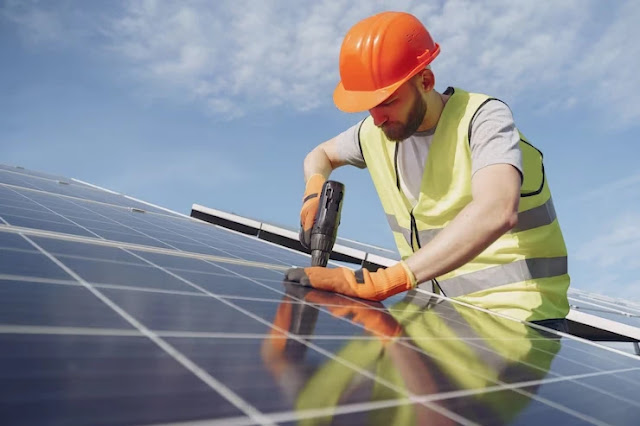Unveiling the Sun's Secrets: A Comprehensive Guide to Solar Panel Installation
Harnessing solar energy is an effective strategy for reducing energy costs and promoting sustainability. As a result, solar panels are becoming increasingly prevalent worldwide. This article aims to explain the intricacies of installing solar panels, leaving no stone unturned. Whether you're contemplating a DIY project or hiring professional installers, you'll find valuable insights here, even for specific locations such as solar panel installation in Edmonton.

Introduction to Solar Energy
Solar energy is radiant light and heat emanating from the sun, harnessed using an array of evolving technologies such as solar heating, photovoltaics, and solar thermal energy. Solar panels (photovoltaic panels), a popular solar energy technology, convert sunlight into electricity. As a result, they contribute to a sustainable energy future, reducing our reliance on fossil fuels and significantly lowering greenhouse gas emissions.
Understanding Solar Panels
Solar panels are composed of numerous solar cells made of silicon, functioning as semiconductors. When sunlight hits the cells, they absorb its energy, causing electrons to move and thus creating an electric current. This direct current (DC) is converted to alternating current (AC) through an inverter, which can then be used to power a home or business.
Assessing Your Solar Potential
Before installing solar panels, it's crucial to assess your property's solar potential. This involves evaluating your location's solar resources and considering any potential shading. Luckily, online tools can assist with this evaluation. The National Renewable Energy Laboratory's PVWatts Calculator, for instance, can estimate a solar installation's electricity production.
Solar Panel Installation Process
1. Energy Audit and Site Assessment
An energy audit after solar pv installation course identifies a building's energy consumption patterns and suggests ways to reduce energy use. Following the audit, a professional site assessment is necessary to determine the best solar panel system size and placement. Key considerations include the roof's orientation, tilt, and structural soundness.
2. Choosing a Solar Panel System
Solar panels come in various types, primarily monocrystalline, polycrystalline, and thin film. Monocrystalline panels, the most efficient but expensive type, are optimal for properties with limited space. Polycrystalline panels offer a balanced compromise between efficiency and cost, while thin-film panels, the least efficient, are more affordable and flexible.
3. Financing and Incentives
Investing in solar panels can be costly, but numerous financing options and incentives make solar energy more accessible. You can buy the system outright, lease it, or enter a power purchase agreement (PPA). Additionally, incentives like federal tax credits, state and local incentives, and solar renewable energy certificates (SRECs) can offset costs.
4. Installation and Grid Connection
Installation begins with setting up the mounting system, usually on the roof. Next, the panels are affixed to the mounts, followed by wiring and installation of the inverter and battery storage system, if any. A professional electrician then connects the solar system to the grid. The final step involves a thorough inspection and system testing to ensure everything is functioning properly.
5. Monitoring and Maintenance
Once operational, solar panels require little maintenance - periodic cleaning and inspection for damage are generally sufficient. Many solar companies provide system monitoring tools to track energy production and alert you to any potential issues.
6. Solar Panel Installation in Edmonton
For those living in Edmonton, a northern location might give rise to concerns about the efficacy of solar panels. However, it's worth noting that Edmonton receives more sunlight hours than several German cities, which are global leaders in solar power. Thus, solar panel installations are indeed beneficial in Edmonton, given the availability of substantial sunlight, combined with government incentives to promote renewable energy.
Conclusion
Embracing solar energy brings a host of benefits, from significant cost savings to an impressive contribution towards a sustainable future. Whether you're doing it yourself or engaging professionals, understanding the solar panel installation process can make your transition to solar power smoother and more rewarding. As renewable energy gains traction, there has never been a better time to ride the solar wave, no matter where you reside, even in places like Edmonton. With careful planning and the right resources, you can efficiently transform your home or business into a hub of sustainable energy, harnessing the sun's power to light up your world.

No comments